|
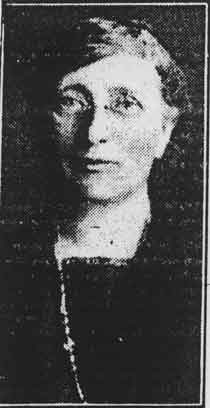 |
|
|
Telegraph Journal,
30 July
1940
Loretta Leonard Shaw |
|
"Compelling
the forces of conservatism to yield…"
Loretta Leonard Shaw
(1872-1940)
Writer, teacher, and missionary Loretta Leonard Shaw made
modernity her mandate, Christian principles her means, and the Far East her
field. In her work as a missionary to Japan from 1905 to 1938, Shaw
repeatedly underscored the need for
women's emancipation, better
educational opportunities, religious freedom, moral reform and the
maturation of Japan's "soul" to keep pace with its industrial advancement.
Hers was a sophisticated and compelling approach, based on years of study in
Japan and an intimate knowledge of its society, religious culture, commerce,
politics and even building materials. A "keen
student of international relations," Shaw was
"quick to
realize the significance of the conditions she saw." In her 1922 book
Japan in Transition, and in her regular missionary reports and opinion
pieces, Shaw spoke sharply but sympathetically of Japan's
most troubling issues, which she identified as poverty,
weakness in the labour movement, subjugation of women, a persistently feudal
social structure, and the degrading influence of legal prostitution.
Her prescription for these ills was a form of piety manifested broadly in
charitable social service, democratic government with universal suffrage,
egalitarian households, moral order, and
industrial progress. In each of her dynamic reports, she attributed "true democratic movements" in Japan to its
"little band of Christians" who were
"bringing people out to a broader vision of humanity and
to a new independence of thought and action."
| |
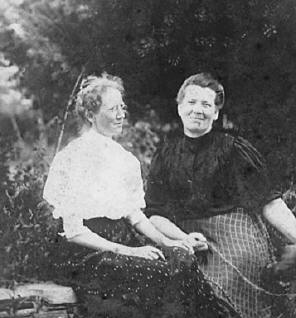 |
| |
Archives & Special
Collections, Harriet Irving Library, University of New Brunswick
(detail)
Loretta Shaw (left) and an Unidentified Woman
|
Shaw devoted her life to proclaiming her message in Japan
and educating Westerners about "the Japan of Today." Born in Saint John to Margaret E. Hilyard
and carriage-maker Arthur N. Shaw, Loretta was one of eight siblings. She
was a sharp scholar and a rapid learner, earning a Master of Arts degree
from the University of New Brunswick after four years of study, and picking
up the Japanese language in one year, instead of the usual
two. In 1905, after seven years as a teacher in Massachusetts, Shaw was
stationed in the Church of England's Osaka
mission, where she remained (when not on furlough or speaking tour) until
1931, when she went to work with the Christian Literature Society in
Tokyo.
This ecumenical body published and distributed spiritual reading material, as well as "good wholesome literature for young people." Perhaps it was this
mandate which led Shaw to give her friend
Hanako Muraoka an English copy of
Anne of Green
Gables
as a parting gift just prior to the commencement of World War
II. This was Japan's first encounter with the red-haired heroine who would
rapidly become a national favourite.
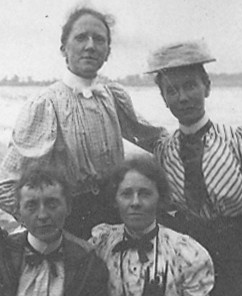 |
|
|
Archives & Special Collections, Harriet Irving Library,
University of New Brunswick (detail)
Loretta Shaw (top left) and Three Unidentified Women
|
|
Evangelical work in
the East and speaking tours in the West took Loretta Shaw twice around the
world. During one trip she spent two months in the Holy Land and over the
course of another she visited Russia, Norway, Germany, France and England.
On occasional visits to her Saint John home, she made significant material
and intellectual contributions to the Natural History Society Museum. In
January 1911, for example, Shaw
opened the winter season of
Ladies' Auxiliary lectures with an earnest lecture on
"Japan and its
Problems," which was "followed with the closest attention by the large
audience present." She also donated
many Asian artefacts
to the Museum – over 400 in all! By 1924, she had
given over 150 "curios" from Japan, all of which were displayed in the
Museum's Oriental
Exhibition that year. Also just in time for the Exhibition, Shaw sent a
series of watercolour pictures by Japanese artists (chiefly Gato and H.
Kato), as well as a collection of pictures depicting Japanese life. These
were prized by museum personnel for their educative value and their addition
to the "pictorial richness" of the
Museum.
Unable to remain in
Japan after 1939 due to ill-health and wartime pressures, Shaw returned to
live at her sister's residence at 203 King Street East, Saint John. She died
on July 29th 1940, leaving an additional 100 objects to the New Brunswick
Museum, including Japanese textiles, dolls and dozens of prints.

Sources
 |
http://www.yukazine.com/lmm/e/japanne.html |
 |
http://archives.cbc.ca/IDC-1-68-1630-11213/arts_entertainment/lucy_maud_montgomery/clip8 |
 |
http://club.pep.ne.jp/~r.miki/speech_j.htm |
 |
Loretta Shaw fonds.
Archives &
Special Collections, Harriet Irving Library.
University of New Brunswick. |
 |
Mission World,
February 1916. |
 |
Saint John
Evening Times-Globe,
30 July 1940. |
 |
Saint John
Globe,
10 January 1924; 1 February 1924. |
 |
Shaw, Loretta L.
Japan in Transition.
London, Church Missionary
Society, 1922. pp 8, 14, 42. |
 |
The
Living Message,
February 1937; June
1924; April 1932; March 1927; January 1930. |
 |
The
New Era, May
1905. |
|
|
From Her
Collection
~~~~



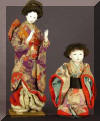
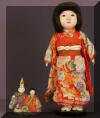

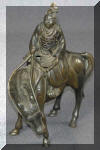
 |
|
![]()